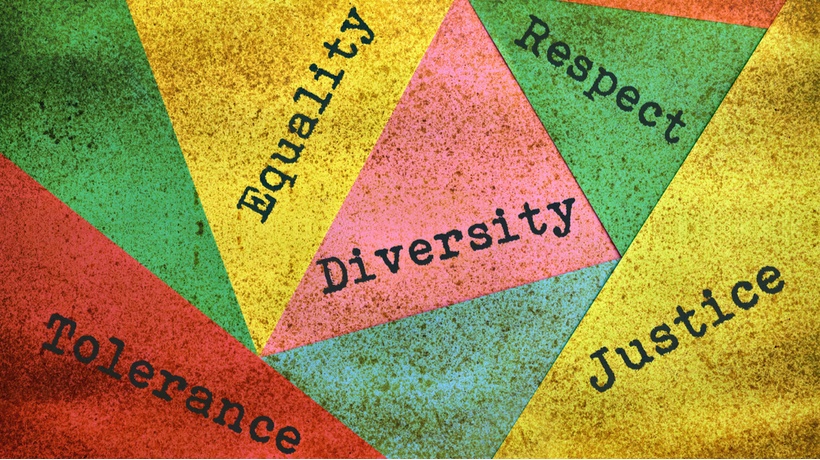Uncovering HR's Role In Diversity, Inclusion, And Equity
I live in Minneapolis, the epicenter of 2020’s racial tensions and protests. Humankind watched the news with reactions from sadness to horror. As we watched, many of us turned our attention inward and thought, “What can I do?” “What is my role concerning diversity, inclusion, and equity for my organization?” “What can I do to make sure my small circle of influence is doing what’s needed to promote diversity, inclusion, and equity?”
We are going to explore these questions and address HR’s role: the what, why, who, and how.
First, it's important to define what we're talking about so that we are on the same page. Here are the simple definitions for workplaces:
- Diversity
All the ways people within a group differ from one another. - Inclusion
Actions that help everyone feel welcomed and respected. - Equity
All employees have an equal opportunity to succeed.
As you think about your organization, are these three definitions in place? Are they being practiced daily? Would all of your employees agree?
Let’s now think about why diversity, inclusion, and equity are important.
There has been a great deal of research done on the benefits an organization achieves when they embrace diversity, inclusion, and equity. Here are a few:
- According to McKinsey: Companies with high levels of gender and ethnic diversity outperform others by up to 35%.
- A Boston Consulting Group study found that companies with more diverse management teams have 19% higher revenues due to innovation.
- 67% of job seekers consider workplace diversity an important factor when considering employment opportunities, and more than 50% of current employees want their workplace to do more to increase diversity. (Glassdoor)
- Higher representation of women in C-suite positions results in 34% greater returns to shareholders. (Fast Company)
- Companies with diversity are 45% more likely to report that they captured a larger portion of the market and 70% more likely to have entered into a new market in the past year. (Harvard Business Review)
If you are trying to make the business case, these stats should more than suffice. In fact, they create a very compelling business case for the need of diversity, inclusion, and equity in the workplace.
Josh Bersin, leading industry analyst and researcher, sums it up perfectly, “Companies that embrace diversity and inclusion in all aspects of their business statistically outperform their peers.”
So, Who Needs To Drive Diversity, Inclusion, And Equity?
Is it the responsibility of the C-Suite or HR? Just like managing the financial health of the organization is the C-Suite’s responsibility, the day-to-day and strategic activities are led by the Finance and Accounting team. The same is true with diversity, inclusion, and equity. These are the responsibility of the C-Suite, as it impacts the company’s brand and performance, but the strategies and the day-to-day activities of diversity, inclusion, and equity are led by HR.
Now that we’ve made the business case, what is your plan? Use the following checklist to ensure your plan extends across all areas of HR. From recruiting to Performance Management and total compensation to succession planning. Measure and assess each area. Use the checklist as the “how” to ensure your organization is diverse, inclusive, and equitable.
No matter where you live or how the recent protests affected your organizations’ processes, you can make a positive impact by being more diverse, inclusive, and equitable. Your realm of influence starts with your organization and if your organization embraces diversity, inclusion, and equity, all your employees and their family members will also feel the impact. We might not be able to change our society, but we definitely can influence our organizations and by doing so, your positive changes will have an effect on our society. Every small step toward diversity, inclusion, and equity is a step in the right direction.
Diversity, Inclusion, And Equity Checklist
Review the checklist below. How does your workplace measure up? For any box that you do not check, think of it as an opportunity to increase your organization's diversity, inclusion, and equity and make a change.
Recruitment And Selection
As companies add employees to their team, they need to make sure there are no biases. Biases can enter in the recruitment process from where you source candidates to how you select candidates.
-
- Are you sourcing job candidates using multiple mediums to ensure you have a diverse job pool?
- Are you using your ATS to filter candidates, in or out, based on qualifications directly related to the job without any biases?
- Do your interviewers have a specific process for objectively evaluating job candidates when selecting who to hire?
- Are your interviewers following a standardized interview process and an evaluation process that is used with all candidates?
- Have you clearly defined what “cultural fit” means in terms of competencies?
- Are your interviewers trained on unconscious bias in the selection process?
- Look at your selection data. Are you sourcing a market appropriate number of diverse candidates? Are certain managers hiring fewer diverse candidates? If you answer “yes,” you need to dig deeper and take action.
Performance Management
Train managers on your Performance Management process and ratings. Make sure managers are evaluating performance without bias.
-
- Are all managers/evaluators of performance trained on your Performance Management process and ratings before completing any performance reviews?
- Are you measuring performance on the competencies used in your selection process?
- When you look at overall performance ratings, are there managers that are scoring diverse employees lower?
- Do your diverse employees have similar performance rating averages as your non-diverse employees?
Total Compensation
To make sure to have diversity, inclusion, and equity in your compensation and reward programs, ask the following questions comparing the same jobs and same performance levels:
-
- Are there pay inequities between men and women?
- Are there pay inequities for diverse employees?
- Are raises and bonuses tied to performance, with employees that earned higher performance ratings receiving larger raises and/or bonuses?
- Do you have clear performance metrics defined to ensure unconscious biases don’t affect pay equity?
If your organization has a bargaining unit that governs pays and bonus payments, these questions may not apply.
Learning And Development
Since training and development have such a large impact on performance which leads to bigger pay increases and potential promotions, making sure all employees have equal L&D opportunities is critically important.
-
- Do all employees have the opportunity to drive their own Learning and Development through online resources?
- Do all employees have development plans that point out learning resources the employee can use to complete their development plan?
- Do you train your employees and managers on unconscious bias, microaggressions, diversity, inclusion, and equity?
- Are certain groups benefiting from learning opportunities more than other groups?
- For development opportunities that require manager/leader sponsorship, are you making sure that these opportunities are being awarded without bias?
Review the data and if there are inequities, dig deeper to understand and take action.
HR Communication
Consider the range of communication to your employees, whether printed, online, or in apps, and ensure your employee base is accurately displayed in your communication.
- 21. Are the images in your communication diversely representative of all employees?
Talent Management
When it comes to succession planning and how high-potential candidates are selected, you need to be sure and measure that there is a representative people in the talent pipeline that reflects the candidate pool in society, not just in your organization.
-
- Do you have an internal job posting board so that employees can self-identify for job opportunities?
- Are your competencies used, in part, to select candidates for your succession planning?
Engagement And Employee Surveys
A good way to find out what your employees think about diversity, inclusion, and equity is to ask.
-
- Do you ask your employees if they feel included, are treated equally, and have equal opportunities?
- Analyze the data to ensure diverse groups are answering questions in a similar fashion as the non-diverse groups. Statistical differences need to be investigated and additional data or follow-up may need to be gathered.










